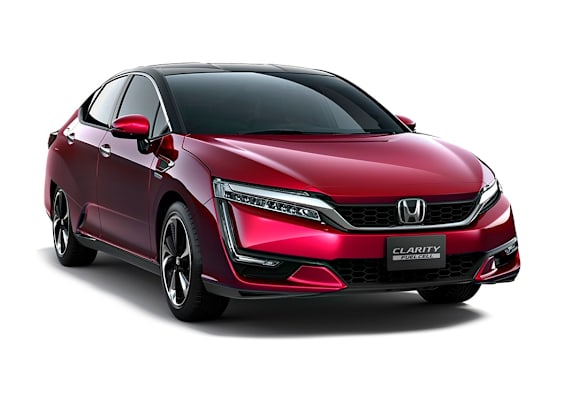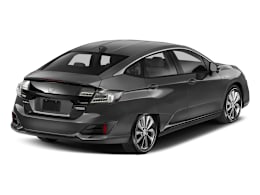Introduction
2017 Honda Clarity Fuel-Cell Car Leads a New Family of Green Sedans
This second-generation model is available for lease in California, with more regions to comeOverview
Honda kicked off its multifaceted approach to tackle stringent fuel-economy standards with the 2017 Honda Clarity FCV, a fuel-cell vehicle that was years in the making. It's the first model in the all-new Clarity family, which will include plug-in hybrid and battery-electric versions.
The midsized Clarity lineup lets you choose the powertrain that best fits your lifestyle without having to compromise on vehicle size or practicality to get leading-edge efficiency. All versions of the Honda Clarity feature seating for five passengers in a comfortable, luxurious interior. The only major difference when compared with a more conventional car, such as the Accord, is how the Clarity is powered.
First out of the gate was the 2017 Honda Clarity FCV hydrogen-powered version, launched in California in December 2016. Honda claims a maximum range of 366 miles per tank of high-pressure hydrogen for this zero-emissions vehicle. (At this time, hydrogen-refueling station are scarce outside of the Los Angeles and San Francisco metro areas. Learn about the federal government's Alternative Fueling Station Locator.)
We borrowed a Clarity FCV from Honda (for a fee) to gain driving impressions and take a closer look at this pioneering green machine, and to compare it with our Toyota Mirai fuel-cell car.
Fuel-cell vehicles combine hydrogen gas with oxygen to produce electricity, which in turn powers the electric motor that drives the front wheels. Technically, FCVs are electric vehicles (EVs) that generate their own power. Unlike battery-based EVs that rely on long charging times, fuel-cell vehicles are refueled like conventional vehicles and typically have a longer range than most pure EVs. The only tailpipe “emission” is water, so these are classified as zero-emissions vehicles. Hydrogen production typically relies on the reforming of natural gas.
The Honda Clarity FCV is rated to return 68 MPGe (miles-per-gallon equivalent) combined, 69 MPGe in the city and 67 MPGe on the highway. According to Honda, the FCV’s 366-mile range is a 50 percent improvement over the previous-generation FCX Clarity’s 240 miles.
When we filled the borrowed Clarity FCV to its capacity of 5.5 kilograms, however, we saw a projected range of just 255 miles. According to a Honda spokesperson, indicated range is based on the history of how the car was driven previously.























